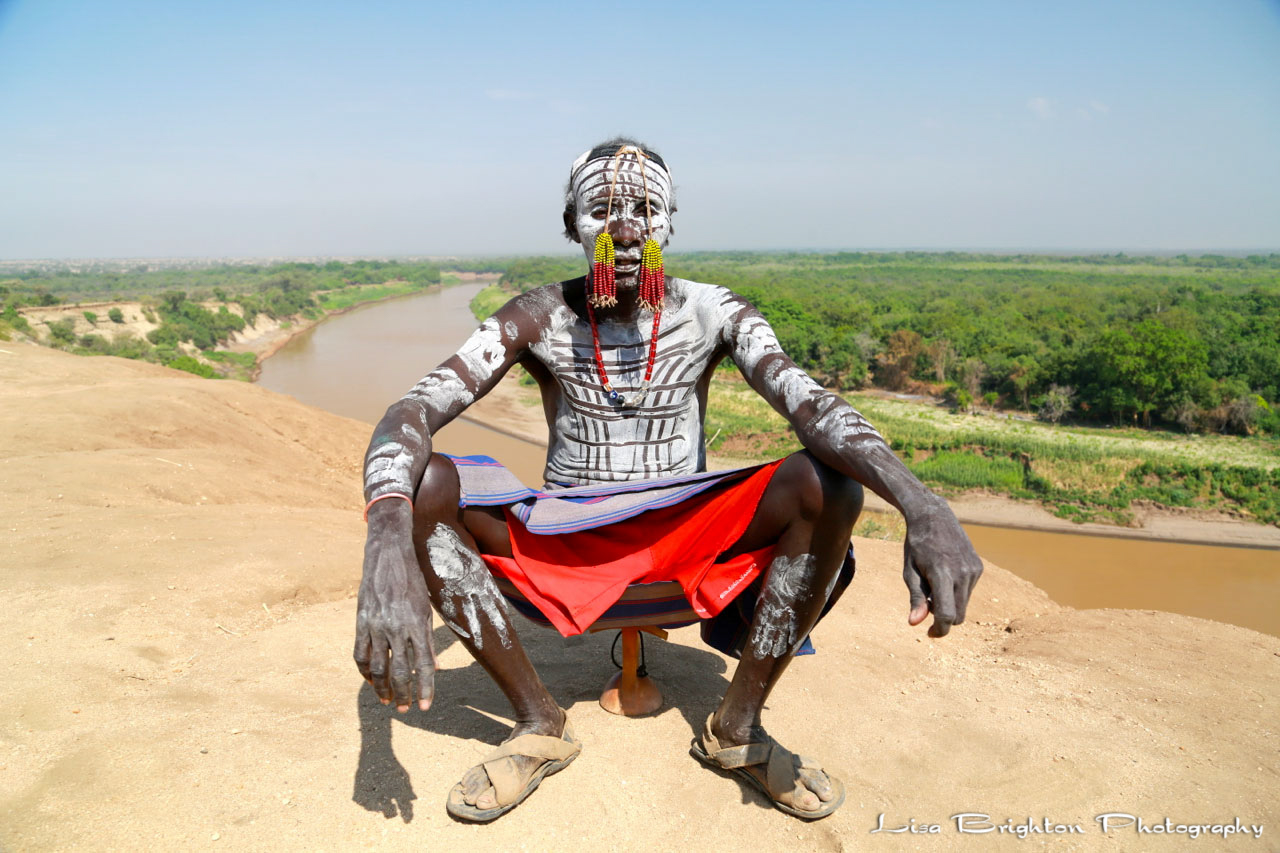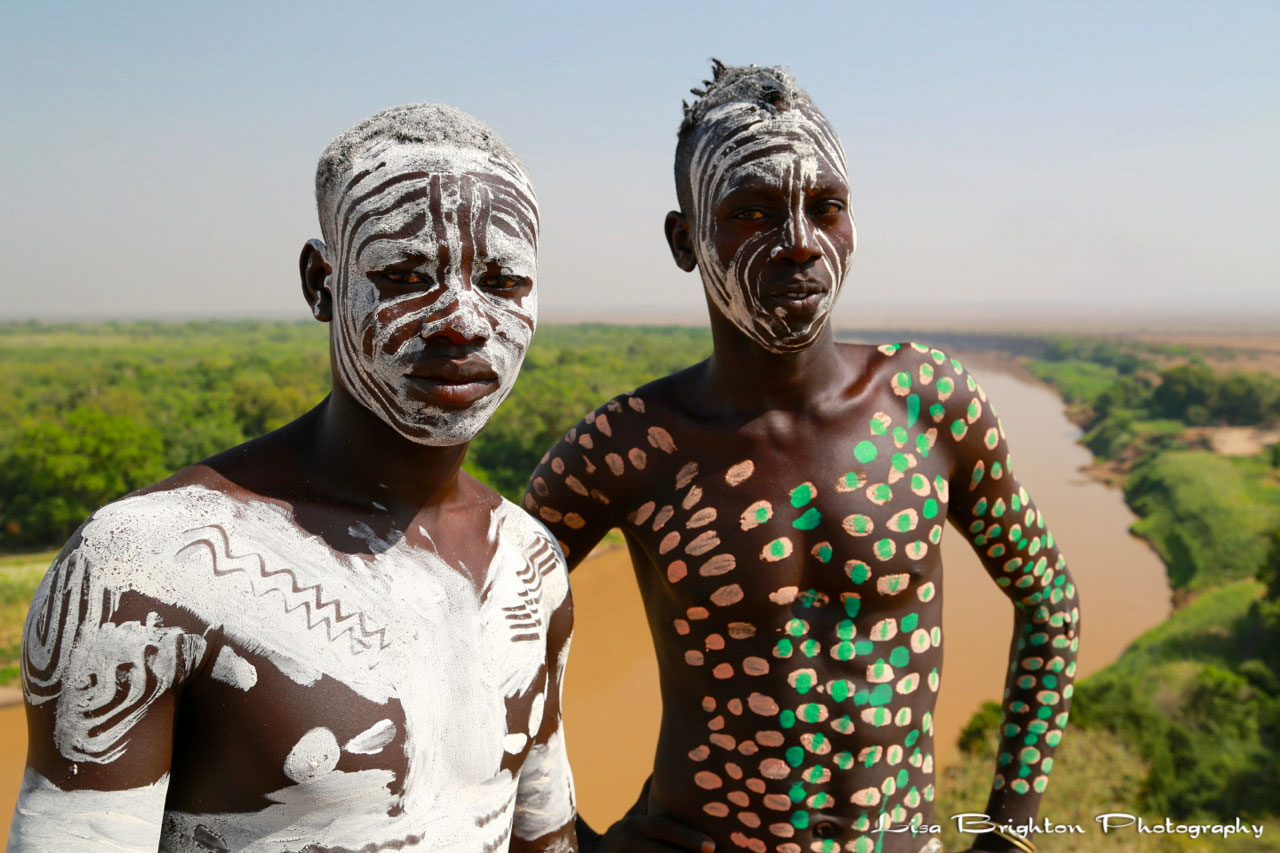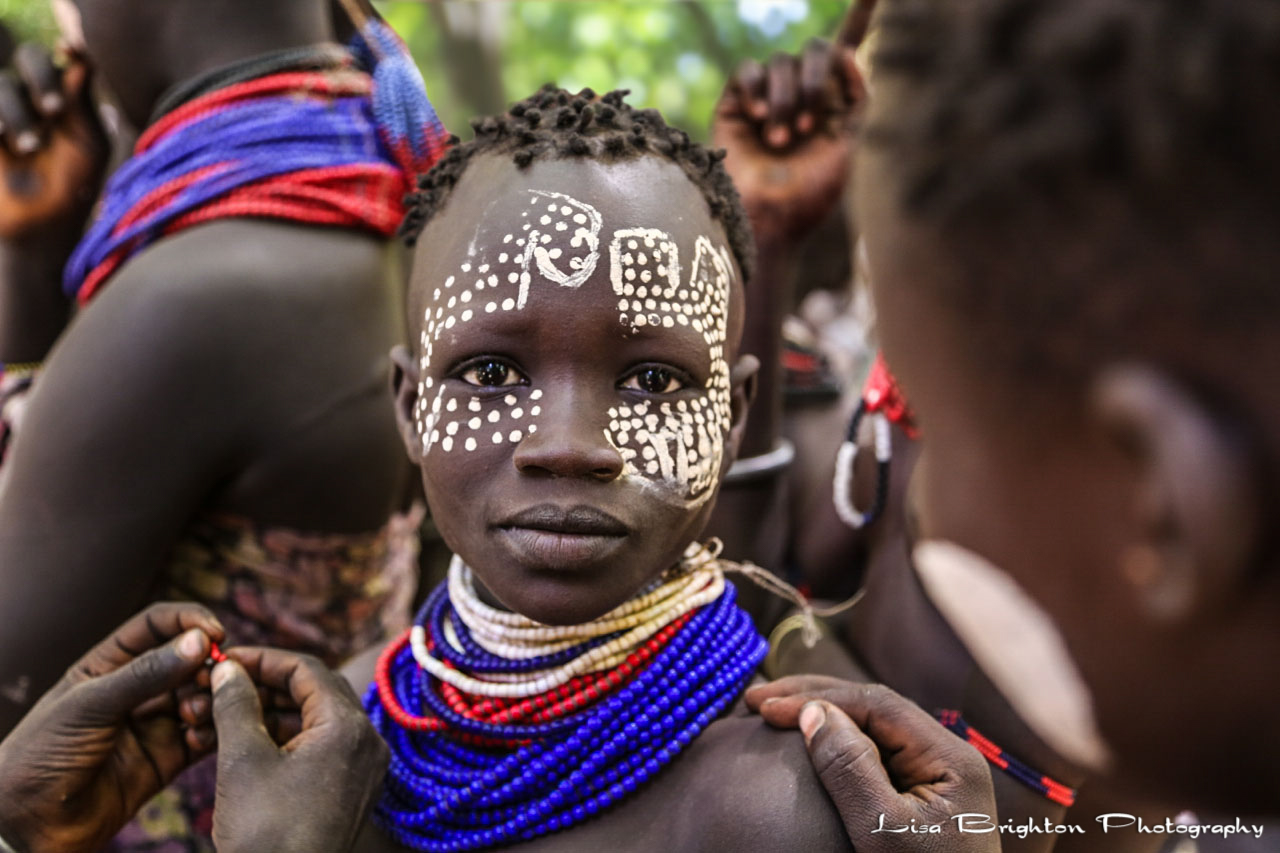6. Tides of Change
 It’s funny that I’m being asked for one of the few things I took out of my luggage before traveling to Ethiopia. “You’re sure that’s what she wants?” I ask Dono, a twelve-year-old boy who speaks English and acts as my interpreter. He walks with me through the Kolcho village, which sits on cliffs overlooking the Omo River. I’ve learned that some boys here translate to make money, and Dono is very eager to assist me while I’m here photographing one of two Kara tribal communities today. “Yes. To clean with… the clothes.” “Laundry soap?” I watch as the young woman’s face lights up, and I assume it’s in recognition of the two words and the hope that I might have some for her. She’s holding a toddler who is wearing a very dirty T-shirt, and she has an animal pelt draped over her body along with layers of bright yellow and red beads. I recognize that she is a member of the Hamar tribe, which I
It’s funny that I’m being asked for one of the few things I took out of my luggage before traveling to Ethiopia. “You’re sure that’s what she wants?” I ask Dono, a twelve-year-old boy who speaks English and acts as my interpreter. He walks with me through the Kolcho village, which sits on cliffs overlooking the Omo River. I’ve learned that some boys here translate to make money, and Dono is very eager to assist me while I’m here photographing one of two Kara tribal communities today. “Yes. To clean with… the clothes.” “Laundry soap?” I watch as the young woman’s face lights up, and I assume it’s in recognition of the two words and the hope that I might have some for her. She’s holding a toddler who is wearing a very dirty T-shirt, and she has an animal pelt draped over her body along with layers of bright yellow and red beads. I recognize that she is a member of the Hamar tribe, which I  photographed yesterday. “Please tell her that I don’t have any and I’m sorry.” I listen and watch as he relays the information. She turns and disappointedly walks away. “Dono, she was from the Hamar tribe. Why is she here?” “She comes with the others… they bring the milk. We have no cattle.” “I understand,” I say, remembering that this is the tribe whose cattle became infested with disease from the Tsetse fly. The tribe adapted and became farmers of sorghum, maize and beans, which they grow according to the Omo River’s natural flood cycle. The river, which I see over my right shoulder, is a vital resource for the tribes of the Omo Valley. It also creates a perfect backdrop for taking images. “Dono, please ask that man with the strands of beads over his eyes whether I can photograph him. I can’t tell if he’s looking at me.” Dono says something in their native language, and the man nods while he looks in my direction. The lack of direct eye contact with him is a bit unnerving, especially since I work hard to capture the expressiveness in people’s eyes. I ignore my nervousness and point to an area where I’d like him to sit in front of my lens on his “berkota” (hand-carved stool). As I frame his image, I think that if I were his enemy, his appearance would intimidate me. But as a visitor, I feel welcome here. All the members of this small community have been very kind, and they eagerly approach my lens, hoping to make some Birr (Ethiopian currency).
photographed yesterday. “Please tell her that I don’t have any and I’m sorry.” I listen and watch as he relays the information. She turns and disappointedly walks away. “Dono, she was from the Hamar tribe. Why is she here?” “She comes with the others… they bring the milk. We have no cattle.” “I understand,” I say, remembering that this is the tribe whose cattle became infested with disease from the Tsetse fly. The tribe adapted and became farmers of sorghum, maize and beans, which they grow according to the Omo River’s natural flood cycle. The river, which I see over my right shoulder, is a vital resource for the tribes of the Omo Valley. It also creates a perfect backdrop for taking images. “Dono, please ask that man with the strands of beads over his eyes whether I can photograph him. I can’t tell if he’s looking at me.” Dono says something in their native language, and the man nods while he looks in my direction. The lack of direct eye contact with him is a bit unnerving, especially since I work hard to capture the expressiveness in people’s eyes. I ignore my nervousness and point to an area where I’d like him to sit in front of my lens on his “berkota” (hand-carved stool). As I frame his image, I think that if I were his enemy, his appearance would intimidate me. But as a visitor, I feel welcome here. All the members of this small community have been very kind, and they eagerly approach my lens, hoping to make some Birr (Ethiopian currency).  It’s Dono, though, who really impressed me when he asked whether his “English was good” and then told me how hard he is working to learn. He said he also hopes to speak several other languages. “So your education is important to you?” I asked. “Yes!” he excitedly said. I think of him now while I’m here with the second Kara community, listening to the elders talk and chant in their native tongue. I know that many generations separate theirs from Dono’s. I’m watching a lively dance performance while standing shoulder to shoulder with the people of the tribe and trying to comprehend this amazing celebration. Some curious eyes look at me, and I’ve taken only few images. I’m more interested in watching and listening to how this group moves together. As they clap their hands and stomp their feet, their sense of community is evident. It makes me wonder how things are going to change as the younger generations become more and more educated and appreciate things like laundry soap and foreign languages.
It’s Dono, though, who really impressed me when he asked whether his “English was good” and then told me how hard he is working to learn. He said he also hopes to speak several other languages. “So your education is important to you?” I asked. “Yes!” he excitedly said. I think of him now while I’m here with the second Kara community, listening to the elders talk and chant in their native tongue. I know that many generations separate theirs from Dono’s. I’m watching a lively dance performance while standing shoulder to shoulder with the people of the tribe and trying to comprehend this amazing celebration. Some curious eyes look at me, and I’ve taken only few images. I’m more interested in watching and listening to how this group moves together. As they clap their hands and stomp their feet, their sense of community is evident. It makes me wonder how things are going to change as the younger generations become more and more educated and appreciate things like laundry soap and foreign languages.
